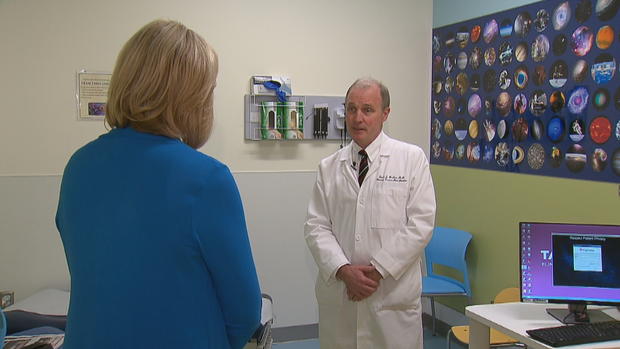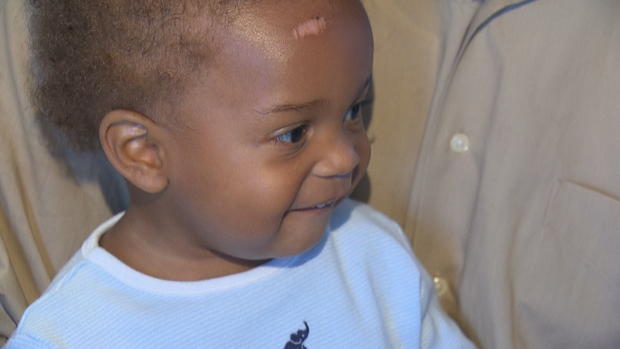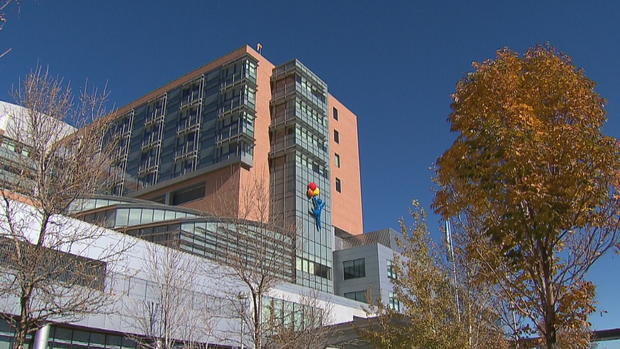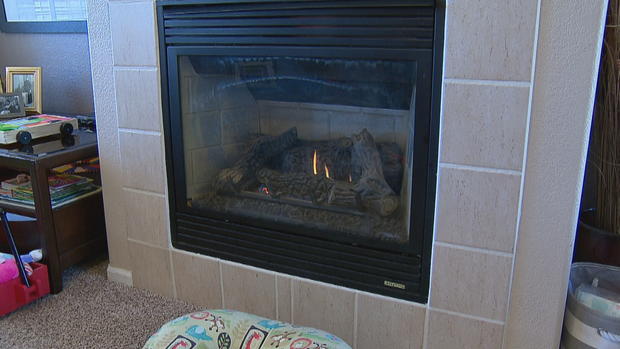Sizzling Hot Glass-Front Fireplaces Lead To Preventable Burns In Toddlers
By Kathy Walsh
DENVER (CBS4)- With cold weather on the way, for many families that means turning on the gas fireplace. Now, Children's Hospital Colorado has a warning for parents before they flip the switch.
The concern is glass-fronted gas fireplaces. Within minutes of turning them on, the glass is hot enough to cause third-degree burns.
Fifteen-month-old Lincoln Solbrook said "Ow" as his dad Thomas reminded him to steer clear of the fireplace.
"Have to be careful, don't we," said Thomas.
Firing up the fireplace brings back painful memories for Lincoln's parents.
"I honestly had sleepless nights where I felt like I had crippled my son," said Thomas.
On May 1, the Solbrooks switched on the gas fireplace to warm up the house. Lincoln's mom, Beatrice Masudhio Solbrook, was taking a nap and then 8-month-old Lincoln was downstairs with his dad.
"I got distracted for a second," said Thomas.
The baby reached up and touched the sizzling glass.
"I just grabbed him as soon as I could," Thomas explained.
"I heard screams and they were running upstairs," said Beatrice.
At Children's Hospital Colorado, Lincoln was treated for second-and-third-degree burns.
"We see between 25 and 35 kids each year with hand burns from these glass fireplace doors," said Dr. Steven Moulton, Burn Center Medical Director and trauma surgeon, at Children's Hospital Colorado.
He's seen a 50 percent increase in the hand burns since 2006.
"It's preventable," Moulton said.
Lincoln's hand has healed completely but his parents haven't overcome their guilt.
"We just never thought of the danger of him touching it," said Beatrice.
No fireplace for the Solbrooks this winter. And they want other parents to know the hot glass is a serious hazard for tiny hands.
Additional Information from Children's Hospital Colorado:
Children's Hospital Colorado (Children's Colorado) is the only level 1 pediatric trauma and burn center in the region. Children's Colorado has joined other burn centers to implore that the Consumer Safety Product Commission (CSPC) revise and strengthen the newly adopted safety standards for glass-fronted gas fireplaces. Glass-fronted gas fireplaces are associated with a significant number of preventable burn injuries in toddlers each year. These burn injuries require painful wound care and rehabilitation. The end result can be scarring that interferes with normal function, as well as psychological after-effects.
From 2014-2015, Children's Colorado treated on average 33 toddlers per year with hand burns caused by touching a hot glass fronted gas fireplace.
The most frequent site of injury is the hand. Hand burns are difficult to treat and often need extensive rehabilitative care. The hand, most often the palmer surface, is involved in over 95% of these injuries. Of these hand burns, 3-11% need surgery. Successful outcomes often involve occupational therapy, splinting, or casting of the hand and/or arm to enable functional healing. Some of these grafted burns will need reconstructive surgery in the future in order for the child to maintain normal hand function.
Care of hand burns often requires that the children and their families travel to a pediatric burn center. Many of these injuries require specialized care. Our multicenter study found that an average of four follow-up visits were required, amounting to a substantial time commitment and financial burden.
Burns can occur instantly upon contact with a hot glass fronted gas fireplace.
- The mechanism of these injuries typically involves the toddler toppling into or touching the glass front and, lacking the coordination to extricate themselves from the glass, they sustain more severe burns.
- The glass fronts, even up to12 minutes after they are extinguished, exceed the temperature associated with instantaneous third degree burns. The glass front temperatures ranges from 400-1,000 F (200-500 C). The temperature resulting in an instantaneous third degree burn is 172 C.
The awareness of the general public regarding the excessively high temperatures of the glass fronted gas fireplaces is necessary as many of these fireplaces are in public places.
Glass-fronted gas fireplaces represent a preventable injury hazard in the home and in public places. Protective heat resistant barrier screens that are strong enough to support the weight of the child can mitigate these injuries. The minimal cost of these screens makes them a viable environmental modification. To significantly decrease the injury frequency, however, industry needs to retrofit previously-installed glass-fronted gas fireplaces. Additionally, safety messaging needs to be more far reaching to include public safety announcements regarding the injury potential of the glass fronts. As healthcare workers, who change the dressings of these children's burns and oftentimes must perform surgery and splinting procedures to heal their burns and console them through painful therapy sessions, we ask the CSPC to reconsider and strengthen the safety standards for glass-fronted gas fireplaces.
For more info on glass fireplace burns and prevention/tips: https://www.childrenscolorado.org/glassdoorfireplace
For more info on other burn injuries and safety tips: https://www.childrenscolorado.org/burnprevention
To learn more about common burn injuries during the holidays and how to work with your kids to prevent them, tune-in to the Children's Hospital Colorado Facebook Live session this Friday, November 18 at 3 p.m. This session will feature Children's Colorado Clinical Psychologist Brad Jackson, who works with families recovering from burn injuries.
Kathy Walsh is CBS4's Weekend Anchor and Health Specialist. She has been with CBS4 for more than 30 years. She is always open to story ideas. Follow Kathy on Twitter @WalshCBS4.










